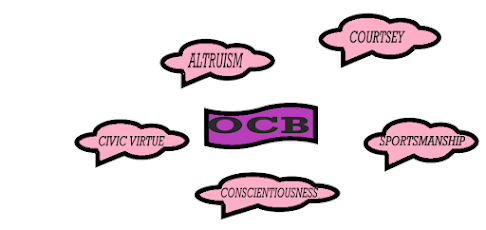According to Fred Luthans (1998), "Organizational Commitment is most often defined as (1) a strong desire to remain a member of a particular organization; (2) a willingness to exert high levels of effort on behalf of the organization; and (3) a definite belief in, and acceptance of, the values and goals of the organization".
It refers to the interrelation or attachment a personnel shares with their organization or employer. Organizational commitment has also been described as an individual's psychological attachment to an organization.
Meyer and Allen, (1991) has defined organizational commitment as "a psychological state that (a) characterizes the employee's relationship with the organization, and (b) has implications for the decision to continue or discontinue membership in the organization".
While studying organizational behaviour, the researches and real life experiences, several vital actions from the part of the employees have been considered as the key roles behind the rate of productivity or output an organization shows at the end of the day. And, one of the most discussed behaviour among them are organizational commitment. It is an essential determinant for explaining employee's behaviour within the organization.
Organizational commitment shares strong correlations with many other variables like - job satisfaction, turnover rate, absenteeism or loyalty towards the organization. The job characteristics, job enrichment, and the role of the leader in terms of communication, participation and task interdependence plays a vital role in the formation of the commitment towards the organization.
MODELS OF ORGANIZATIONAL COMMITMENT:
1) The Member - Based Model - This particular model suggests that the attachment or bond originates from the behaviours and personal attributes of the employees.
2) Organization - Based Model - The organization - based model puts emphasize on the role of the organization in providing the resources to its employees and in the satisfied ways of reciprocity.
3) Three - Component Model - The most popular model of organizational commitment is the three-component model suggested by Meyer and Allen. The three forms of commitment are - a) Affective commitment - This type of organizational commitment signifies the feeling or emotional aspect.
b) Continuance commitment - The summation of the feeling aspect and cognitive aspect of the employee which leads to the thought about the consequences of leaving the organization.
c) Normative commitment - It refers to the type of commitment an employee has when he feels obliged to retain in the organization.
Lastly, organizational commitment is essential for both the employees and the organization, as it provides certain positive outcomes - listing them below;
Employee productivity, Improved organizational performance, Employee advocacy, Lower absenteeism and Decreased turnover.
References:
Luthans, F., Luthans, B. C., & Luthans, K. W. (2021). Organizational Behavior: An Evidence-Based Approach Fourteenth Edition. IAP.
Meyer, J. P., & Allen, N. J. (1991). A three-component conceptualization of organizational commitment. Human resource management review, 1(1), 61-89.








